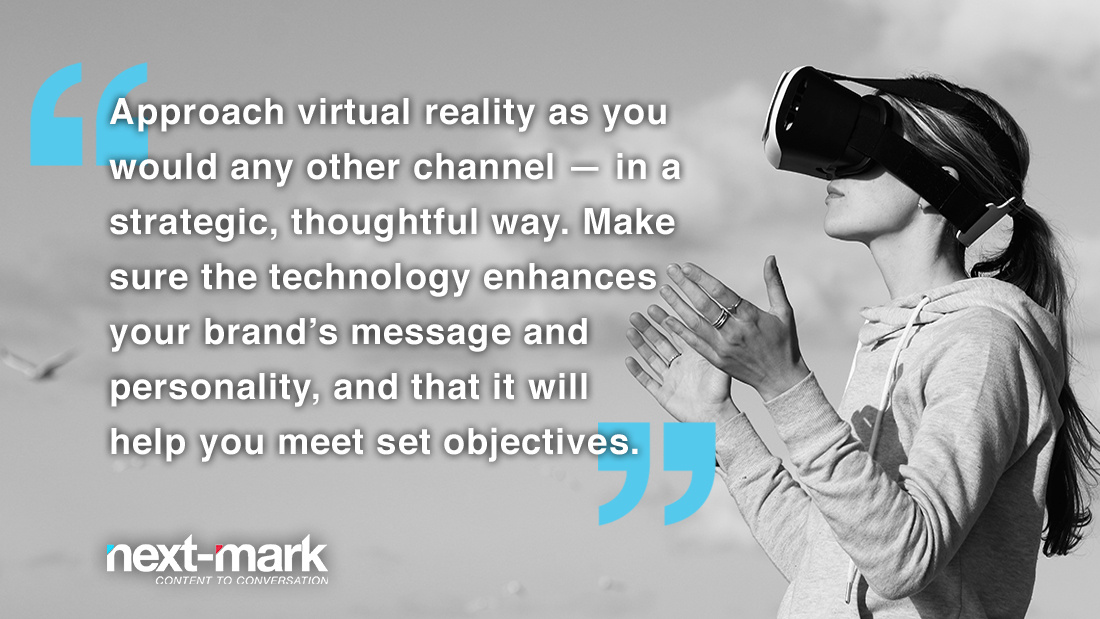
Over the years we’ve seen the latest and greatest technological advancements burst onto the advertising and communications scene. Some stuck around through innovation and engagement, while others became stagnant and slowly faded into irrelevancy. (Remember when every piece of printed material sported a QR code?)
Now, virtual reality, known as VR, is taking over. While our century’s re-invented virtual reality is still in its infancy, the technology is rapidly changing as more and more companies evolve its abilities for a better user experience. Today, brands are using VR to demonstrate product value, share a message and connect users to their mission through immersive storytelling.
There’s no doubt that the virtual reality experience is cool — who wouldn’t want to float around in space or explore the streets of Manhattan from their coach? — but before incorporating VR into your next brand campaign, consider these tips:
Make sure it’s worth the cash
Developing content for virtual reality is time-intensive and costly. There are quite a few factors you should contemplate before you commit. You’ll need to develop 360° videos or create custom 3-D animation, both of which require special equipment and software. Outsourcing the work is another option that will drive up overall cost. Approach virtual reality as you would any other channel — in a strategic, thoughtful way. Make sure the technology enhances your brand’s message and personality, and that it will help you meet set objectives. If it doesn’t, ditch it for a more effective and less expensive medium.
Know your audience.
Is your target market forward-thinking millennials who will jump at the chance to interact with a shiny new gadget? Or are they less technologically savvy baby boomers? Consider whether their experience with virtual reality will be favorable or if it will it hurt their relationship with your brand. You need to have a firm understanding of your audience before asking them to interact with VR.
Think practically.
How will you get consumers to engage with your content? A pioneer of the virtual reality age, The New York Times sent more than 1 million Google Cardboards to its readers. Their app, which houses 360° videos, received nearly as many downloads. Lowe’s set up a virtual reality experience room in a handful of their locations to entice visitors and increase in-store sales. What will be your technique to get consumers to engage with your VR content? Whether you’re supplying people with the right gear or targeting those who already have their own, be purposeful in your approach.